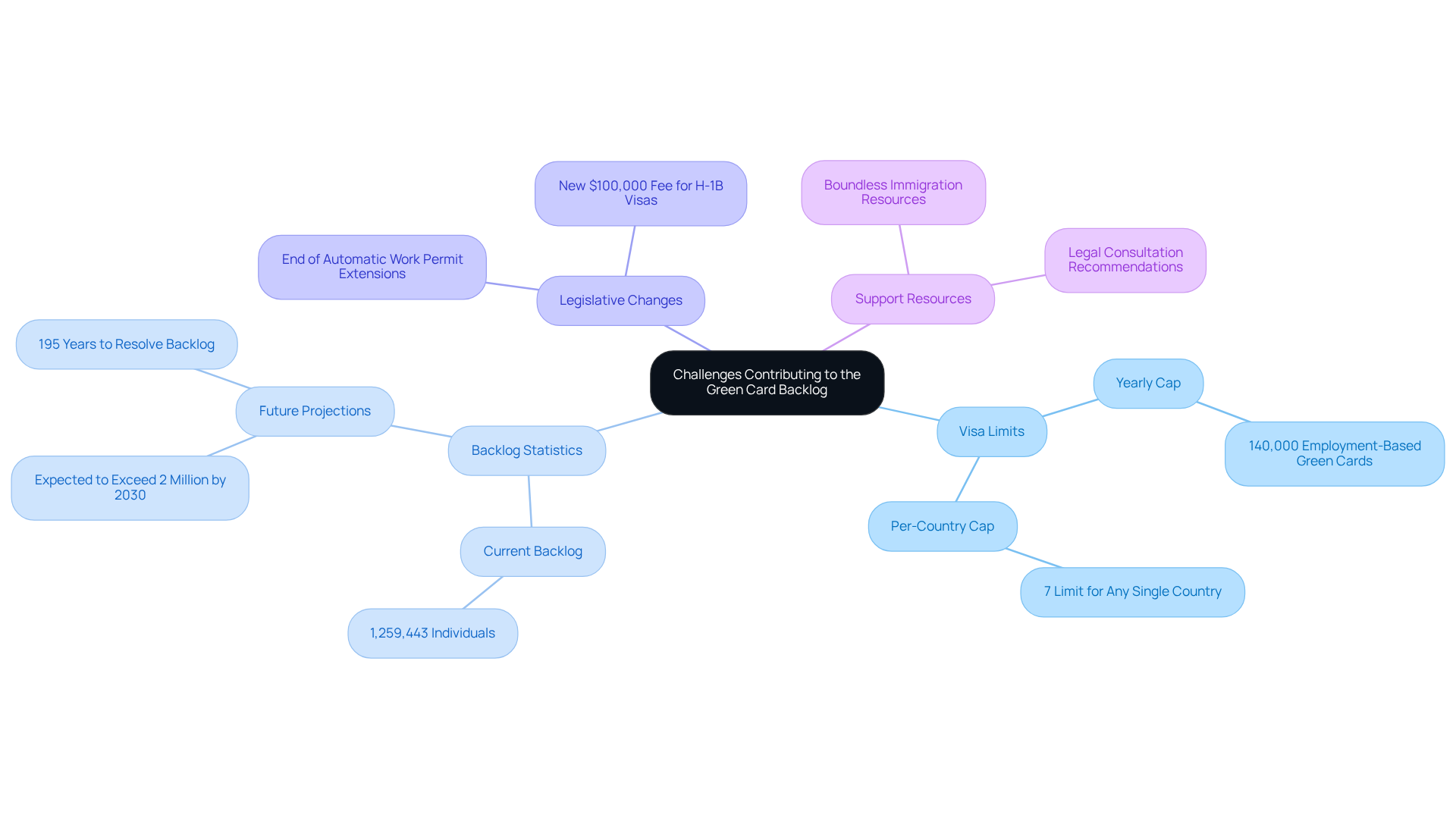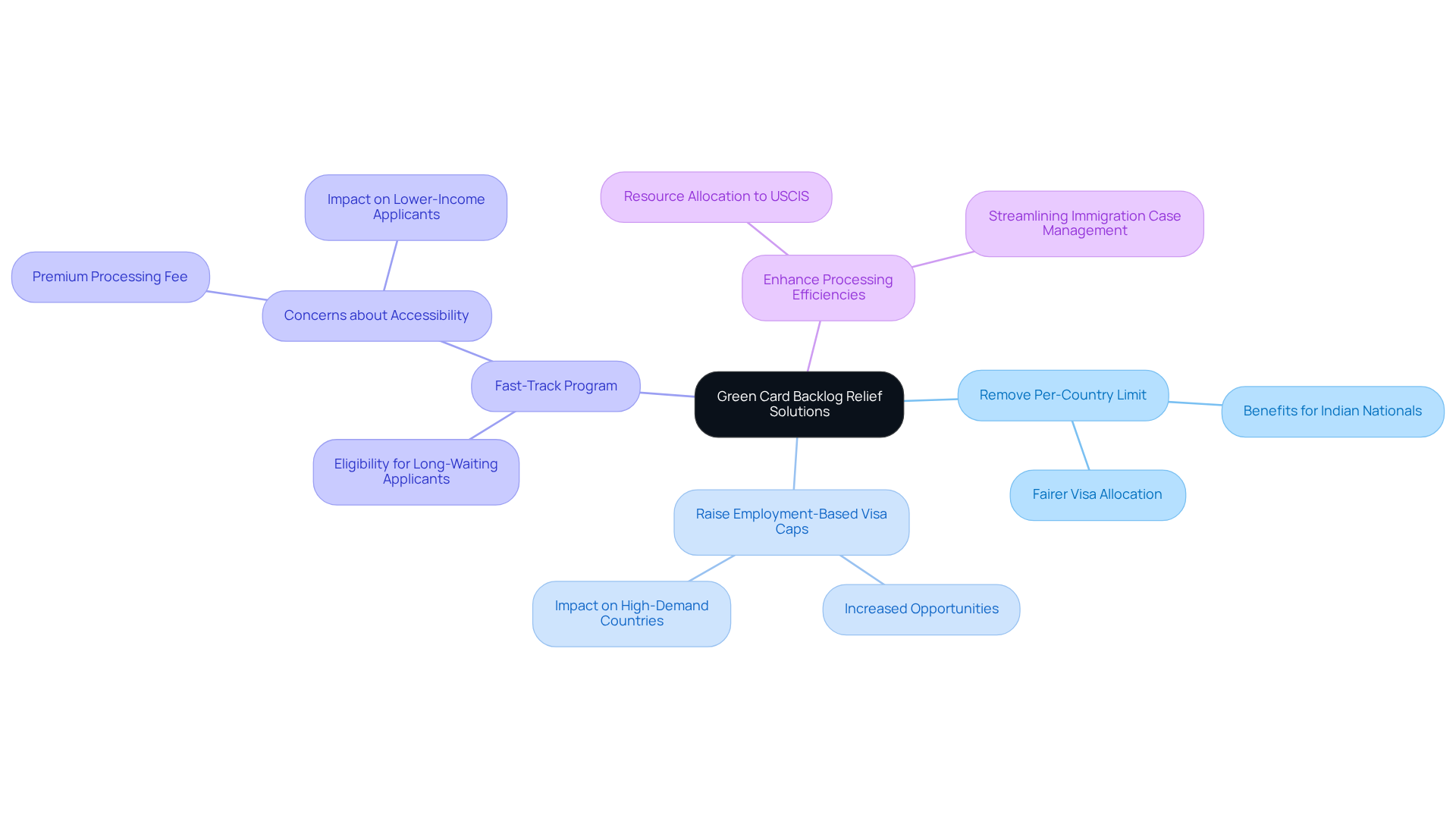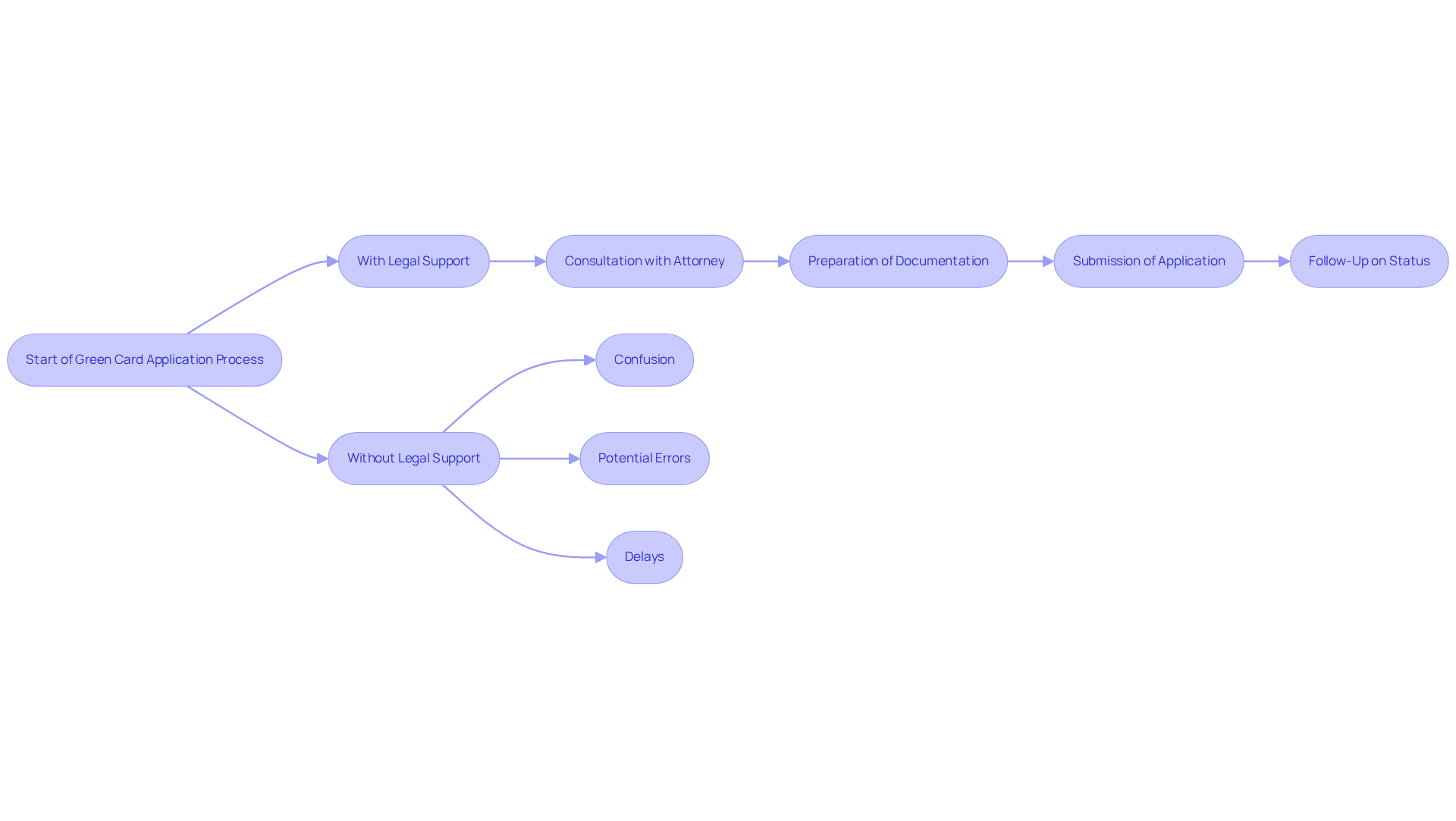Overview
The green card backlog for Indian immigrants is a pressing issue, driven by U.S. immigration regulations that impose strict per-country limits on residency permits. Imagine waiting over 134 years for a chance at a better life—this is the reality for many in certain employment-based categories. With over 1.2 million individuals caught in this backlog, the demand for visas far outstrips the limited supply, leaving families in limbo.
We understand how overwhelming this feels. The situation calls for urgent legislative reforms to alleviate these challenges and provide hope for those affected. It’s crucial to recognize that you’re not alone in this fight. Together, we can advocate for change and push for a system that works for everyone.
Your future matters to us. Let’s stand together and demand the clarity and support you deserve. Yo Peleo — We Fight.
Introduction
The green card backlog for Indian immigrants has reached a crisis point, with over 1.2 million individuals waiting for their chance at permanent residency in the United States. This staggering number isn’t just a statistic; it embodies the dreams and aspirations of countless families ensnared in a web of restrictive immigration policies that impose severe limits on visa allocations. As the situation grows increasingly dire, many are left grappling with uncertainty about their futures.
Have you ever felt lost in the immigration process? What can be done to alleviate this overwhelming backlog, and how can those affected navigate the complexities of the immigration system? We understand how overwhelming this feels. It’s crucial to know that you have rights, even if others tell you otherwise.
We’re here to fight for your family. Your future matters to us. Yo Peleo — We Fight.
Overview of the Green Card Backlog for Indian Nationals
The visa waitlist for individuals from India has reached staggering levels due to the green card backlog in India, with over 1.2 million people currently waiting for employment-based visas. This situation stems largely from U.S. immigration regulations that impose per-nation limits on residency permits, restricting the number granted to applicants from any single country. As of 2025, Indian citizens are confronted with a green card backlog in India that can result in wait times exceeding 134 years for certain employment-based categories, particularly EB-2 and EB-3. The green card backlog in India doesn’t just affect new applicants; it also impacts those already in the green card process, leading to significant uncertainty and frustration for immigrants striving for permanent residency in the United States.
Recent discussions in Congress have underscored the urgent need for reform to tackle these persistent issues, yet real change remains elusive. Compounding the problem is the recent elimination of the grace period for work authorization renewals, which could force many skilled workers into unexpected employment gaps. Many individuals from India rely on temporary work permits that necessitate regular renewals, putting their jobs at risk due to processing delays that can range from three to twelve months.
As the immigration landscape evolves, the challenges faced by migrants from India, particularly the green card backlog in India, demand our attention and action. Have you ever felt overwhelmed by the immigration process? You’re not alone. We’re here to fight for your family and ensure your rights are protected. Your future matters to us, and together, we can navigate these complexities.

Challenges Contributing to the Green Card Backlog
Immigration delays for Indian citizens are a real struggle, and it’s crucial to understand the obstacles at play. First off, there’s a yearly limit on employment-based residency permits, capping the number of available visas at just 140,000. This restriction hits hard, especially with the per-country cap that limits any single country to 7% of the total visas. For India, where demand far exceeds supply, this means many are left waiting. Right now, over 1,259,443 individuals are stuck in the employment visa backlog, with more than 1.2 million Indians facing the green card backlog in India, hoping for their chance.
The situation is further complicated by the rising number of H-1B visa holders transitioning to green cards, which intensifies competition for these limited slots. Legislative changes, like the end of automatic work permit extensions, have led to processing delays and increased scrutiny of applications. This makes the path to permanent residency even more challenging for Indian immigrants.
Without significant immigration reform, the backlog is expected to grow, potentially surpassing 2 million applicants by 2030. Many could face wait times stretching into decades. Alarmingly, estimates suggest it might take a staggering 195 years to fully resolve the employment visa issue.
We understand how overwhelming this feels. But remember, you’re not alone in this fight. Your future matters to us, and we’re here to support you every step of the way.

Proposed Solutions and Reforms for Green Card Backlog Relief
The ongoing green card backlog in India is a real struggle for many families. Legislators and advocacy organizations are stepping up with effective solutions. One key initiative is removing the per-country limit, which would allow for a fairer allocation of visas among applicants from different countries. This change is especially important for Indian nationals, who often face long wait times because of the green card backlog India.
Raising the yearly limit of employment-based visas could also help reduce the backlog significantly. The Dignity Act of 2025 exemplifies this approach by introducing a fast-track program for applicants who have been waiting for over ten years. This program allows them to bypass lengthy processing times, offering a glimmer of hope. Additionally, the act proposes raising the per-country cap for family- and employment-based green cards from 7% to 15%, directly benefiting applicants from high-demand countries like India and China.
However, the fast-track program includes a $20,000 premium processing fee per application, raising concerns about accessibility for lower-income applicants. The Dignity Act aims to eliminate the green card backlog in India entirely by 2035, emphasizing the urgency of these reforms. Enhancing processing efficiencies within USCIS and allocating more resources to immigration case management are critical steps toward improving the overall system.
Support for these reforms is crucial. They have the potential to reshape the immigration landscape for immigrants from India by tackling the green card backlog India, providing renewed hope and opportunities for permanent residency. Families separated by immigration delays may find relief through these proposed changes. It’s imperative to address the challenges faced by professionals from the subcontinent in the EB-2 or EB-3 categories who have waited over ten years. Together, we can fight for a fairer system.

The Role of Legal Support in Navigating Green Card Applications
Navigating the residency application process can feel overwhelming, especially for Indian citizens facing a significant backlog. Have you ever felt lost in this confusing system? Legal support is essential in this journey. Immigration attorneys provide personalized guidance tailored to your unique circumstances, helping you understand your rights and options. They ensure that all necessary documentation is meticulously prepared and submitted. This attention to detail is crucial; errors or omissions can lead to costly delays.
Statistics show that immigrants with legal representation have a much higher success rate. For instance, those represented by attorneys are significantly more likely to succeed compared to those who try to navigate the process alone. It’s important to know you have rights, even if others tell you otherwise. Immigration attorneys advocate on your behalf, addressing any issues that may arise during the application process and keeping you informed about evolving immigration laws and policies.
Engaging a knowledgeable immigration attorney not only alleviates stress but also enhances your chances of a successful outcome amidst the green card backlog India. This is a wise investment for anyone looking to secure their future in the United States. Remember, you don’t have to face this alone—we’re here to fight for your family. Yo Peleo — We Fight.

Conclusion
The green card backlog for Indian immigrants is a pressing issue, with over 1.2 million individuals stuck in a lengthy waitlist for employment-based visas. This challenge stems from U.S. immigration policies that enforce strict per-country limits, leading to wait times that can stretch for decades. As the immigration system grows more complex, the urgency for reform becomes undeniable, reflecting the frustrations of those striving for permanent residency.
Key insights reveal the backlog's multifaceted nature:
- Limited visa availability
- Increasing demand from H-1B visa holders
- Legislative hurdles complicating the path to residency
Proposed solutions, like eliminating per-country caps and boosting visa allocations, offer a glimmer of hope for those affected. Moreover, the importance of legal support cannot be overstated; experienced immigration attorneys can significantly improve the chances of success in navigating this challenging landscape.
Ultimately, tackling the green card backlog isn't just about policy reform; it's about restoring hope and opportunities for countless families separated by immigration delays. The call to action is clear: support legislative changes aimed at alleviating the backlog, and recognize the vital role of legal assistance in this journey. Together, these efforts can pave the way for a more equitable immigration system that acknowledges the contributions of Indian nationals and provides them with the future they deserve.
Frequently Asked Questions
What is the current status of the green card backlog for Indian nationals?
The green card backlog for Indian nationals has reached over 1.2 million individuals waiting for employment-based visas, with wait times exceeding 134 years for certain categories like EB-2 and EB-3.
Why is there such a significant green card backlog for Indian nationals?
The backlog is primarily due to U.S. immigration regulations that impose per-nation limits on residency permits, restricting the number of green cards granted to applicants from any single country.
How does the green card backlog affect individuals already in the process?
The backlog not only affects new applicants but also those already in the green card process, leading to uncertainty and frustration for immigrants seeking permanent residency in the United States.
What recent changes have affected work authorization for skilled workers?
The recent elimination of the grace period for work authorization renewals has put many skilled workers at risk of unexpected employment gaps due to processing delays that can last from three to twelve months.
What actions are being discussed to address the green card backlog?
Recent discussions in Congress have highlighted the urgent need for reform to tackle the green card backlog issues, although real changes have yet to be implemented.
How can individuals affected by the green card backlog seek support?
Individuals feeling overwhelmed by the immigration process are encouraged to seek support and advocacy to protect their rights and navigate the complexities of the immigration system.




